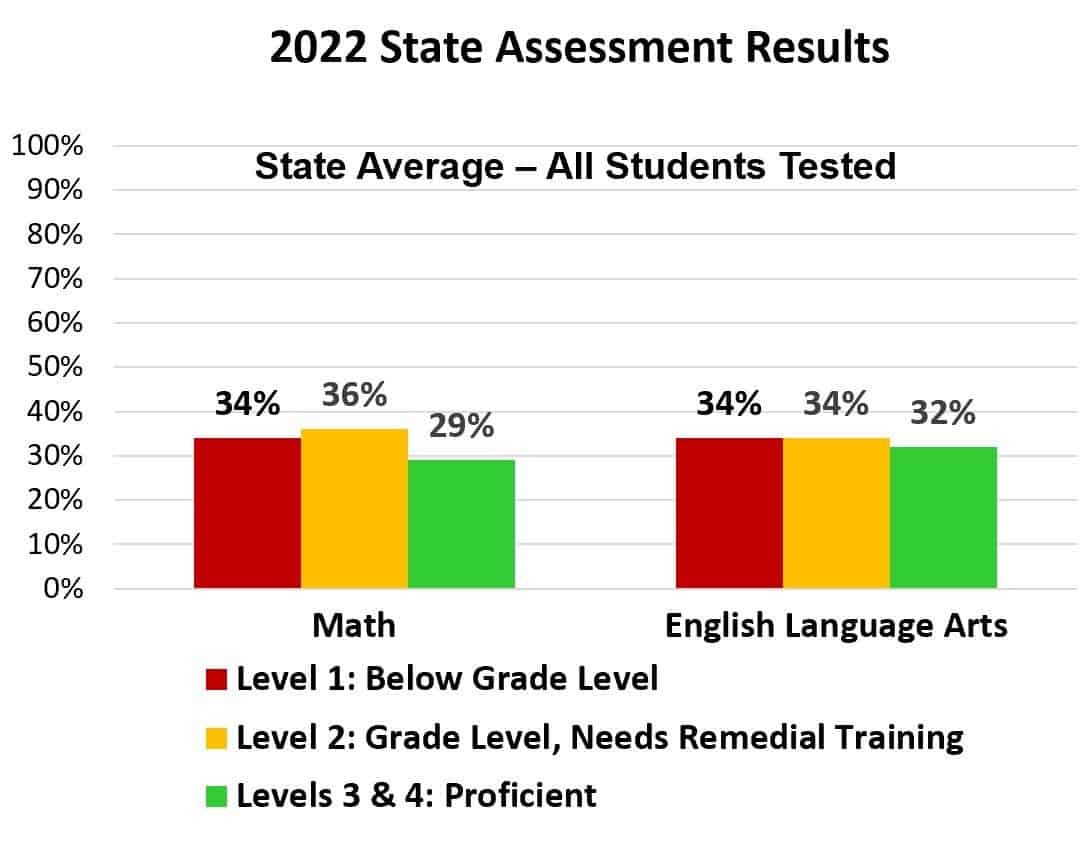When school officials talk about education in general or school choice in particular, their focus is almost exclusively on what is best for the school system; student needs and academic preparation are a distant thought at best. That certainly was the case in a recent school choice debate on KSNT-TV between state school board member Ann Mah and Michael Austin with Americans for Prosperity. Student achievement wasn’t even a distant thought in the debate.
Mah opposes school choice, and pretty much everything she said was wrong, distorted, or off-point in her defense of the public school system. She said nothing about the state’s student achievement crisis that is driving demand from parents for more educational options. She got one thing right, however, saying, “What parents want is strong public schools.”
 But many Kansans have serious concerns about public schools. Polls conducted by SurveyUSA on behalf of Kansas Policy Institute, the Sentinel’s parent company, show more than half of parents and grandparents are concerned that their kids are being exposed to objectionable material. And when they know the facts of student achievement (like there being more students below grade level in math and reading than are proficient), they are very concerned.
But many Kansans have serious concerns about public schools. Polls conducted by SurveyUSA on behalf of Kansas Policy Institute, the Sentinel’s parent company, show more than half of parents and grandparents are concerned that their kids are being exposed to objectionable material. And when they know the facts of student achievement (like there being more students below grade level in math and reading than are proficient), they are very concerned.
That’s why more than 70% of parents and grandparents say taxpayer-funded Education Savings Accounts should be available to parents if they believe their school district is not meeting the academic needs of their children.
Outcomes for low-income students, who are most likely to take advantage of a choice program, are atrocious. Most low-income high school students in Kansas (62%) are below grade level in math, and only 9% are proficient. It’s even worse in Topeka, Kansas City, and Wichita – districts in which students are most likely to take advantage of choice programs.
Low-income kids have had extraordinarily low achievement for a long time and denying them an opportunity to take some of their funding to another school is effectively condemning them to a lifetime of underachievement.
Yet that is exactly what Ann Mah did by distorting the facts, as shown in the following examples:
Mah: “The bill you’re proposing may send the money straight to the parents so they may go buy a latte machine.”
She knows this is false. The money in the proposed Education Savings Accounts (ESAs) doesn’t go to parents; it goes to the State Treasurer. Parents merely tell the Treasurer where to send disbursements for specific education expenses.
Mah: “No evidence” that achievement increases for the kids who take advantage of choice as well as those who stay in public schools.
A large body of research shows that school choice overwhelmingly benefits students and not just those who take advantage of an opportunity to choose a different school.
Research on the effects of educational choice programs compiled by EdChoice shows that 11 of the 17 studies (65%) on program participant test scores find positive effects; four showed no visible effect, and only three (18%) showed any negative effect.
The empirical evidence also shows that choice programs positively impact achievement for students who do not take advantage of a choice opportunity. Of the 28 studies on this issue, 25 (89%) found a positive effect, and only two (7%) found any negative effect.

Mah: School choice causes “segregation.”
Not according to the research. Six of seven studies on the effects of school choice on demographic integration find positive effects, and one found no visible effect.
Mah: Other legislation is “proposing a tax credit scheme that skirts the intent of our constitution.”
The Kansas Constitution says, “No religious sect or sects shall control any part of the public education funds.” Courts across the nation, including the U.S. Supreme Court, repeatedly rule that parents directing the expenditure of public funds does not constitute ‘control’ by any religious sect. Further, the Kansas tax credit scholarship program has existed since 2014, and it has not been challenged in court on those bigoted “Blaine Amendment” grounds.
Mah: The tax credit scholarship program, which served about 1,300 low-income students last year, “cost the public schools more than $10 million.”
Public schools are funded based on enrollment, so when a student leaves the district for a private school or moves to another district, funding declines for the district that lost a student, and it increases for the receiving district. The district still receives per-student funding for each student attending. Mah and other school officials seem to think that a public school district ‘owns’ the kids who live in the district and that parents should not be allowed to choose where to send their children…even to another public school district.
But Mah’s concern for the school system ignores the cost to students who, absent a choice program, must remain trapped in a public school that isn’t meeting their needs. And those costs are enormous.
Wade Moore, headmaster and founder at Urban Preparatory Academy in Wichita, which serves low-income families, says the kids who attend his school are only able to do so because of the tax credit scholarship program. They are a year or more worth of learning behind, even in the second grade, but they get caught up at Urban Prep, and their behavior and outlook on life improve significantly. Research shows that there is only a 12% chance that students not reading at grade level in the third grade will ever catch up. But Ann Mah and other choice opponents aren’t concerned with the costs of not getting a good education. Their focus is on money for school districts.
Many education officials and school board members have made it clear that the demands of the public system take priority over student needs. Giving Kids a Fighting Chance with School Choice tells one story after another of education officials deceiving parents and legislators…de-emphasizing academic preparation…and even ignoring state laws designed to improve student achievement. Parents simply cannot count on education officials to address the student achievement crisis.
That’s why legislators have to give every student a fighting chance with more school choice options.



